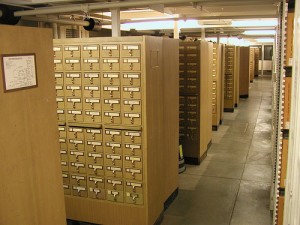Over the past few weeks Gleb Tsipursky has introduced his idea of class-sourcing and I have provided an overview of my adaptation of it in a course this semester. With the first part of my course’s semester project complete, I thought I would provide an update.
My students have been working on amassing and annotating their initial bibliographies of books and articles. The choices of topics reflect the course’s focuses on modernity and sustainability. Students are working on aspects of nuclear power and waste disposal, tuberculosis in post-Soviet prisons, changing lives of native populations in the Taimyr Peninsula, how the formation of the Union of Composers changed classical music, and the shrinking Aral Sea and the environmental and public health consequences associated with it.
I had asked students to use Evernote as the platform for presenting their bibliographies. However, we realized that there are significant formatting issues. For example, if a student initially types the bibliography in MS Word or uses Zotero or RefWorks to generate the bibliography, Evernote creates extra lines and spaces and doesn’t recognize indenting. Because at the early stage I am concerned with students’ abilities to not only locate and evaluate sources but also to learn proper Chicago style citations (many of the students are not history majors and are more proficient in MLA), formatting issues are problematic. Students were to then use Twitter and our blog to promote their work with a link to Evernote. In the future, I will have students use DropBox, where formatting is not an issue, and share their files publicly. Gleb’s use of Delicious provides an automatic community for sharing (and gathering) information in a way that my approach does not. That said, the majority of the students have responded positively to Evernote as a good way to collect their notes in one place and sync them between their computers and iPads. As students begin to collect media to add to their projects, Evernote clipper will become a very valuable tool.
Even with all the “cons” noted above, I still think that using Evernote (and I might experiment with Diigo in the future) as a tool for organizing and teaching organizing is important. I have found over the years that students can be quite good at finding good material, but because they often lack the organizational skills that are so important for historians they fail to see patterns or how the various parts can fit together in a research paper.
I’ll return in a few weeks to update everyone about the projects’ progress. Later this week, meanwhile, my colleague, Prof. Alyssa DeBlasio in the Russian department, will share her thoughts on a class-sourcing project she used in the course “Russian and the Environment.” She will share her insights into first-time class-sourcing, the pros and cons, writing in a new medium, and the problems of making poor work public. Please check back in a few days.
We look forward to others’ insights into how they help students learn and write with new technology. I attended ThatCamp in Pittsburgh this weekend and met with the creators of Classroom Salon. I will likely use it next semester for peer editing in my History of Childhood senior seminar. Stay tuned.
